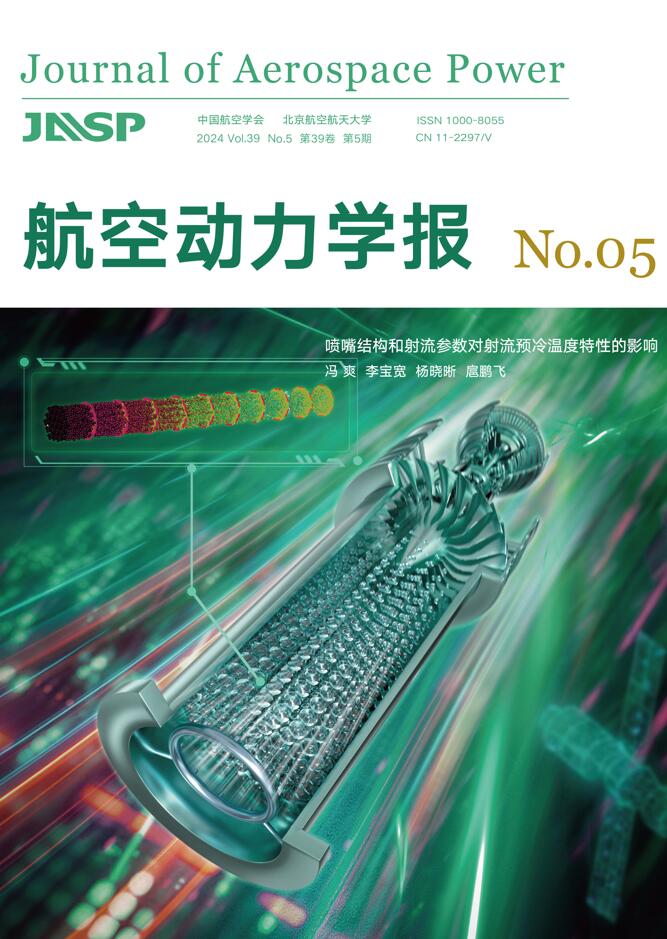Abstract:
In order to analyze the flow field structure of the two-waves evolution in the rotating detonation engine, a numerical simulation was conducted to investigate the formation process of two detonation waves under the separate injection condition. The results showed that from ignition to stable detonation, three phases including ignition phase, collision phase and stable phase, were included in the process. The first collision happened in two detonation waves, but two pressure waves were formed due to lack of fresh mixed gas around the collision zone. Then, the second collision happened in two pressure waves.As a result,the detonation wave and shock wave were formed due to the existence of mixed gas around the second collision zone. After the second collision, a high pressure zone was formed due to the pressure wave reflection and overlay, then the gas was compressed by the high pressure zone and the temperature of the gas was increased, the high temperature gas ignited the fresh mixed gas, finally, the second detonation wave was formed. When the detonation wave was stable, the wave pressure reached 1.45MPa, the temperature was 2500K, and the velocity was 1738m/s. Besides, the thrust on the outlet was 79.76N and the specific impulse was 2312.15s.A significant fluctuation was created by oblique shock wave on the outlet.







